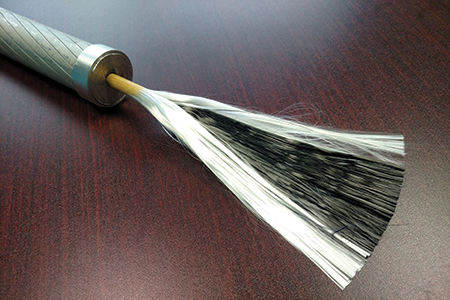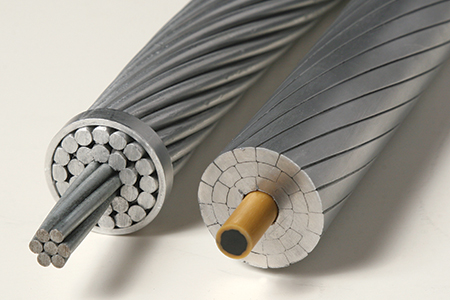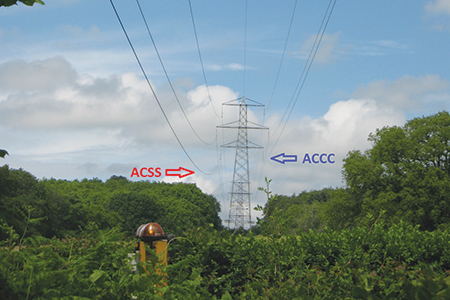Most people I’ve met seem to be well aware of ongoing concerns regarding climate change. While many believe it is just part of a natural cycle – which may be true to some degree – I believe that we should do everything we can to combat it. Why? Ask the folks in California about the increasing severity of droughts, low humidity, high winds and record-breaking fires that have leveled entire neighborhoods. Ask families along the Gulf Coast about the increased severity and frequency of hurricanes. Or ask people in the North East to describe what it’s like to deal with ice storms and a loss of power for days or weeks at a time. “One-hundred-year floods” seem to happen every two or three years these days. It’s obvious that we are being impacted more than ever by changing weather patterns, and I share the opinion of others that we ought to do whatever we can to fight back.
Many entities are striving to reduce their carbon footprints by leveraging renewable/clean energy resources and moving away from fossil fuel consumption that emits carbon and other emissions. While we are beginning to see electric-powered vehicle deployment in the transportation sector, we are also seeing much more innovation and technology deployment in the electric power sector.
In addition to substantial improvements in wind and solar generation, energy storage, smart meters and distributed generation assets, we are also seeing significant advances in overhead conductor technologies. Conductors (also known as high-voltage power lines), manufactured with carbon fiber cores to replace steel core conductors, are now being installed to not only increase line capacity – to enable the integration of more renewable resources, they are also reducing electrical line losses.
While carbon fiber technology has been used widely to improve product reliability, performance and longevity in automotive, aerospace and other applications, due to its high-strength, light-weight and resistance to cyclic load fatigue and corrosion in the conductor sector, carbon fiber’s very low coefficient of thermal expansion also helps prevent conductor sag. Power lines heat up as higher amounts of energy are transmitted, due to the electrical resistance of the conductive aluminum strands. These higher temperatures cause the materials to expand, resulting in conductor sag.
In October 2018, CAL FIRE blamed excessive conductor sag on starting one of the worst fires in California history in 2017. Excessive conductor sag also contributed to the major East Coast power outage of 2003. While these are just a few examples, excessive conductor sag is a well-known problem in the T&D community.
Getting back to the efficiency message, the use of carbon fiber cores enables the utilization of increased aluminum content and quality for overhead conductors of any size in any diameter (without a weight penalty). The added aluminum content not only serves to carry more electrical current, but it also reduces the electrical resistance of the wires which serves to reduce electrical line losses.
In 2016, American Electric Power won the Edison Electric Institute’s Edison Award for replacing 240 circuit miles of conventional steel reinforced conductor with carbon fiber reinforced conductor (which they did while the line remained energized). While AEP’s primary goal was to substantially increase line capacity to serve growing seasonal demand (without having to replace existing structures), the use of the carbon fiber core conductor also reduced line losses by thirty percent. This reduction in line losses saves AEP over 300,000 MWh of electricity per year. Based on all combined sources of generation in Texas, it also reduces carbon (CO2) emissions by more than 200,000 metric tons per year. That is the equivalent of removing 34,000 cars from the road. This is not an insignificant number. Looking at it from another perspective, the reduction in line losses also freed up over 28 MW of generation. AEP’s investment served them and their customers very, very well.

Carbon and glass fiber ACCC conductor core uses over 600,000 individual carbon fibers

Conventional ACSR and modern high capacity low loss ACCC conductors
In the past, little attention was given to the efficiency of power lines, as the cost of line losses was generally passed through to the consumer and considered to be insignificant. Today, it is becoming more apparent that line loss reductions use carbon fiber conductor technology is a big deal.
Looking back, utilities spent billions of dollars improving the efficiency of generation resources and transformers to reduce operating costs. They also spent billions more creating incentives for their customers to use less electricity by using more efficient appliances. While paying customers to buy fewer of your products may seem to be a strange business model, the utilities had little choice, as securing permits to build more (conventional) generation resources was a losing proposition. In the advent of carbon fiber conductors, utilities now have the option to improve the efficiency of the grid itself.

Sag comparison ACSS and ACCC

Composite Material Applications
 Dave Bryant is director technology at CTC Global Corporation in Irvine, California. Bryant was a co-inventor of the patented ACCC conductor and ancillary hardware components. His 35-year background as a design engineer has focused on the use of advanced composite materials in numerous industrial applications, which has helped expedite the development, testing and commercialization of the ACCC conductor, which has been deployed to more than 650 projects in 50 countries.
Dave Bryant is director technology at CTC Global Corporation in Irvine, California. Bryant was a co-inventor of the patented ACCC conductor and ancillary hardware components. His 35-year background as a design engineer has focused on the use of advanced composite materials in numerous industrial applications, which has helped expedite the development, testing and commercialization of the ACCC conductor, which has been deployed to more than 650 projects in 50 countries.







